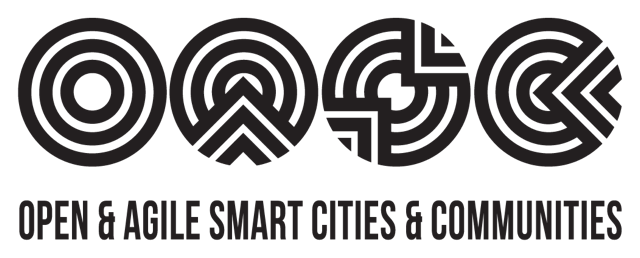Infrastructures are conspicuous for their opacity. They merge into the fabric of the built environment and seem to disappear once they work reliably. They become visible only to experts who build and maintain them, or when they break down. For the rest of us, an infrastructure is embedded in our daily practices, enabling us to do other things.
As Geoffrey Bowker and colleagues phrased it, infrastructures are “pervasive enabling resources in network form” (2010: 98). The obscurity of infrastructure is especially worthy of attention and analysis when we talk about networks that are not as easy to identify as roads, water pipes or electric cables.
In the context of datafication and smart cities, we also need to look at infrastructures that shape our understanding and potentials to interact with the social, political and economic world around us.
In a paper recently published open access in Big Data & Society, I collaborated with Gabriel Pereira, Lasse Verstergaard and Martin Brynskov from Aarhus University to conceptualise one particular element of network infrastructures in smart cities – application programming interfaces or APIs. In what we term ‘CityAPIs’, different strands of research and criticism are merged to highlight that an object such as an API is far from stable and is subject to different kinds of contestations.
APIs: Beyond the Buzzword
Most basically, an API simply regulates what kind of data or function is available from a host (e.g. a server). It defines data types and ways to query them. An API is mostly not visible to an end user but regulates traffic between computers or applications.
Our interest in APIs is connected to the idea that datafication in smart cities creates new ways of ‘seamless integration’ between different data sources. But beyond the buzzword, this seamlessness is the result of massive integration efforts on the social, technological and political levels of cities.
Defining how an API makes certain data available is thus a political question that drives the design and implementation of new infrastructures – from traffic and weather monitoring to social and mobile media applications.
In the article we particularly discuss three perspectives on City APIs, which cover the fields of criticism, design and implementation.
- Criticism of Proprietary APIs such as social media APIs has foregrounded how certain business models are hardwired into the design and governance of APIs. Using the Twitter Streaming API for research purposes, for example, is possible with some constraint, but not intended by the providers of the API. In this perspective, APIs appear as ‘protocological objects’, to quote Bucher (2013), that regulate data exchanges but also practices of programmers and users.
- The design challenges for APIs are addressed in the second part, highlighting that affordances of APIs are negotiated between API producers and API consumers. Creating an API needs to take into account what resources a computer system can offer to an API consumer, and how these are understood. Revealing the ‘intent’ of an API needs to anticipate use cases and disclose in a consistent fashion how particular kinds of data can be queried.
- How APIs intersect with urban innovation initiatives, local governance structures and use-based challenges is the subject of the third part. We present analyses of two projects, City SDK and OrganiCity, to highlight that the technological challenge of designing APIs is overshadowed by political and economic considerations about the future uses of social urban data, their governance and transparency, and the potential for citizens to interact with such new infrastructures.
Although this discussion of CityAPIs may seem to be a fairly technical matter, the article highlights that such elements reveal the social, political and economical contestations about digital urban transitions.
APIs can be envisioned and designed for many different kinds of seams, their weaving of data into the urban fabric is not limited to improved public service delivery or proprietary business models for big data analytics. They rather challenge us to acknowledge and interrogate the pervasive influence of certain infrastructures on the way we understand and interact with the world around us.
Because an API operates at the level of defining and providing data access that serves as a prerequisite and condition for user-focused applications, its definition and implementation embeds crucial socio-political assumptions in a technological framework that has far-reaching consequences for citizens, city administrators, and developers of applications using social urban data. (p. 5)
Cite As
Raetzsch, Christoph; Pereira, Gabriel; Vestergaard, Lasse S; Brynskov, Martin (2019). “Weaving Seams with Data: Conceptualizing City APIs as Elements of Infrastructures.” Big Data & Society 6(1). https://dx.doi.org/10.1177/2053951719827619.
About the Author
Christoph Raetzsch is Professor for Digitisation and Participation at the Department of Media and Communication Studies of Freie Universiät Berlin (interim) and Affiliate Researcher at the Centre for Digital Transition of Cities and Communities (DITCOM), Aarhus University, Denmark. This article has first been published on www.raetzsch.berlin.
Video Abstract

